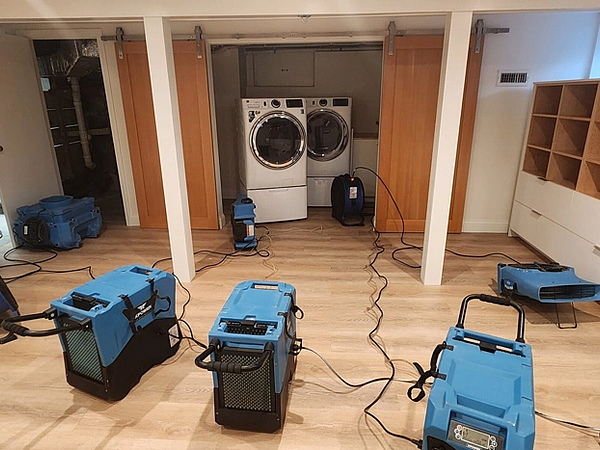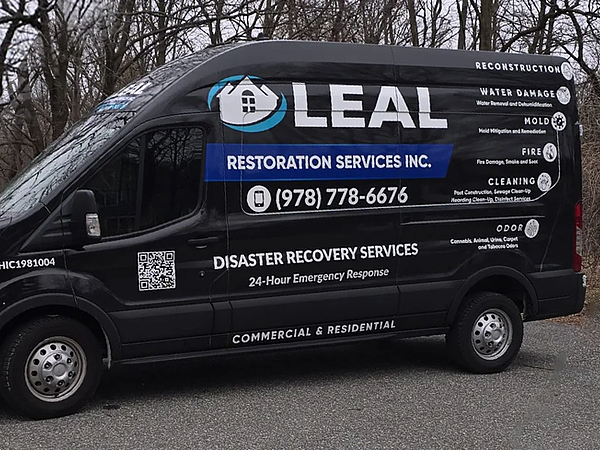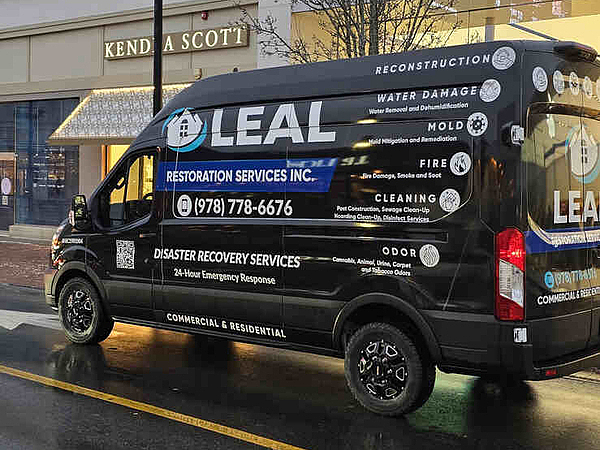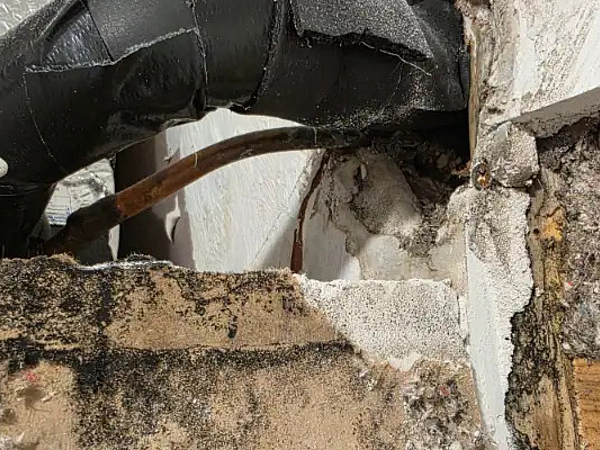Why Roofs in Massachusetts Keep Leaking
Water stains on the ceiling aren’t random. Massachusetts roofs get hammered by snow, rain, and wind, year after year. Leaks show up because the weather is brutal, houses are old, and small roof issues get ignored until they turn into expensive problems.
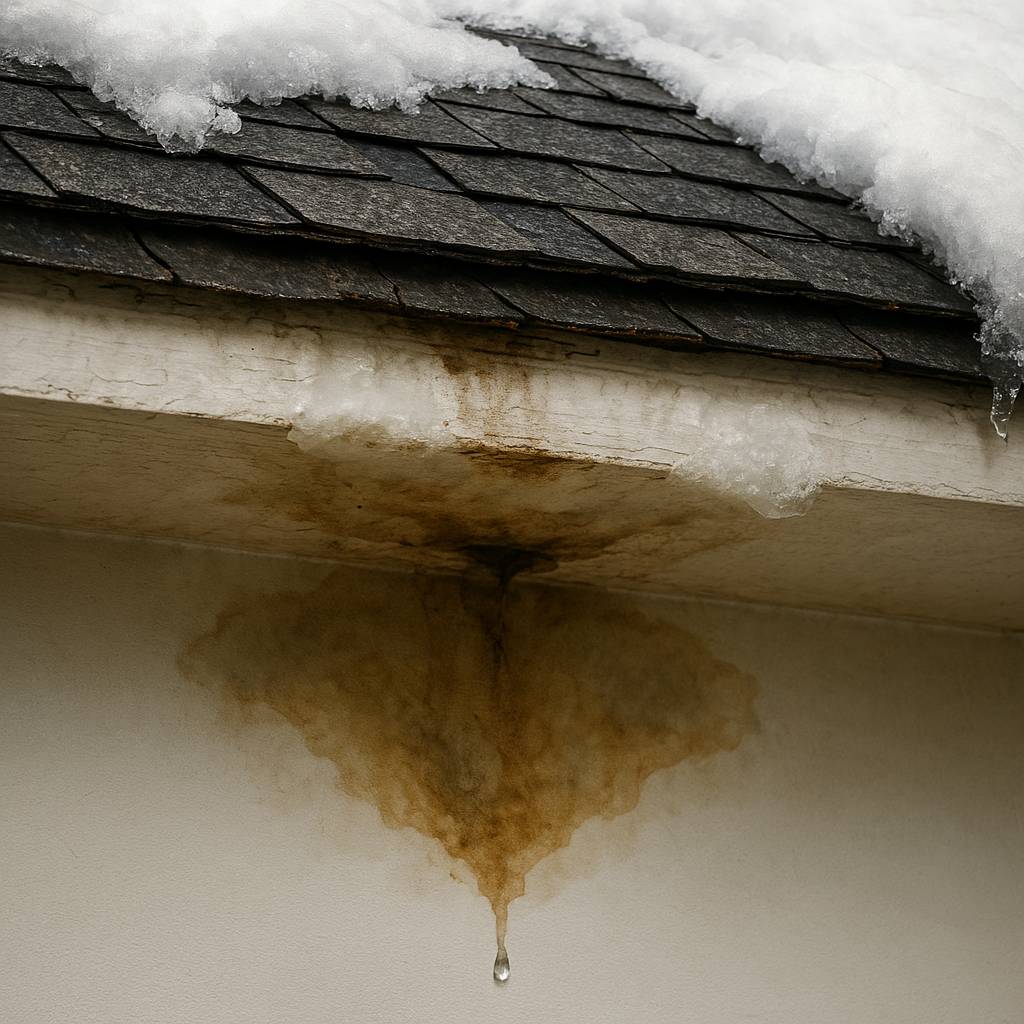
Winter Wrecks Roofs
Snow doesn’t just sit on a roof. It melts, seeps into cracks, and freezes again. That freeze-thaw cycle splits shingles and pries open seams. Water finds the smallest gap, then expands it. One day, the attic is dry. The next, there’s a drip. Ice dams form along the eaves, trapping water behind a wall of frozen slush. The water backs up under the shingles and soaks the wood beneath. Insulation gets wet. Ceilings stain. Mold starts to grow. The damage isn’t always obvious until it’s too late.
Attics without enough ventilation make things worse. Warm air from the house rises, melts the snow on the roof, and the water refreezes at the edge. That’s how ice dams get bigger. The cycle repeats all winter. Even the toughest shingles can’t keep up. When the weather finally warms, the leaks show up in full force.
Leaks Hide in Plain Sight
Most leaks don’t announce themselves with a steady drip. They sneak in. A brown spot on the ceiling. Paint peeling near a window. A musty smell in the upstairs hallway. These are the first signs that water has found a way inside. Ignore them, and the damage spreads. Mold takes hold behind the walls. Insulation clumps and loses its power. The roof deck starts to rot. By the time water pours through, the repair bill has doubled.
- Dark stains spreading across ceilings
- Musty odors in bedrooms or attics
- Paint bubbling or peeling near the roofline
- Drips during heavy rain or after snow melts
- Shingles that curl or go missing after a storm
- Grit from shingles piling up in gutters
These aren’t just cosmetic problems. They point to real trouble above your head. When water gets in, it doesn’t stop at the attic. It moves down through the walls, into the wiring, and across the ceilings. The longer it goes unchecked, the more expensive the fix.
Where Roofs Give Up First
Roofs rarely fail all at once. The weak spots show up first. Flashing around chimneys and vents pulls away. Gutters clog with leaves and ice, forcing water to pool and slip under the shingles. Ridge vents crack or shift, letting rain blow inside. Shingles lose their grit and start to curl. Every one of these problems opens a door for water.
- Loose or missing flashing around chimneys and pipes
- Gutters packed with debris or ice
- Shingles that have lost their protective layer
- Ridge vents that don’t sit flush
- Condensation building up in the attic
Water doesn’t need much of an invitation. Once it finds a path, it spreads fast. The wood under the shingles softens. Nails rust. Mold grows in the dark. The next storm brings more water, and the cycle keeps going. Emergency restoration services can spot these weak points before they turn into disasters. When we inspect a roof, we look for these early warning signs so repairs can be made before a small issue becomes a major headache.
Storms Bring More Than Rain
Massachusetts storms don’t just dump water. They rip shingles loose, snap branches onto roofs, and drive rain sideways under the eaves. After every big storm, new leaks show up. Sometimes the damage is obvious: a missing patch of shingles, a dented gutter, a branch sticking through the roof. Other times, the problems hide. Water sneaks in through a tiny gap and spreads out of sight. By the time the ceiling stains appear, the damage has already spread.
Storm damage isn’t always a quick fix. Shingles need to be replaced. Flashing has to be reset. Gutters need to be cleared and reattached. Sometimes the wood underneath needs to be rebuilt. Storm damage repair isn’t just about patching holes. It’s about making sure the next storm doesn’t do even more damage. Our team at Leal Cleaning & Restoration is trained to identify hidden storm damage and provide lasting repairs that protect your home for seasons to come.
Maintenance Makes the Difference
Waiting for a leak to show up is a losing game. Regular roof checks catch problems before they get out of hand. Twice a year, once in the spring, once before winter, gives you the best shot at a dry house. Look for missing shingles, loose flashing, and clogged gutters. Check the attic for damp spots or mold. Clean out the gutters before the leaves pile up. Schedule a professional inspection if anything looks off.
Keeping the roof dry keeps the rest of the house healthy. Mold can’t grow without moisture. Insulation stays effective. Ceilings stay clean. Regular maintenance costs less than emergency repairs. A little time now saves a lot of money later. We recommend homeowners take advantage of our maintenance programs to prevent leaks and extend the life of their roofs.
Mold Follows the Water
Every leak is an invitation for mold. Once water gets into the attic or walls, mold spores settle in and start to spread. The smell gives it away first: a musty, earthy odor that lingers in the air. Left alone, mold eats away at wood, stains drywall, and triggers allergies. The only way to stop it is to keep the roof sealed tight and dry. Mold prevention starts with a roof that doesn’t leak. Our mold remediation services are designed to address the root cause and restore a healthy environment in your home.
Get Professional Roof Leak Help Today
Leal Cleaning & Restoration brings decades of Massachusetts roofing experience to every job. Call us at 978-778-6676 or schedule an appointment for a thorough roof inspection and repair estimate.
‹ Back




